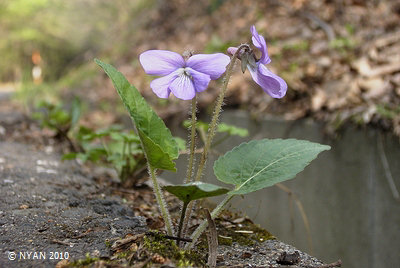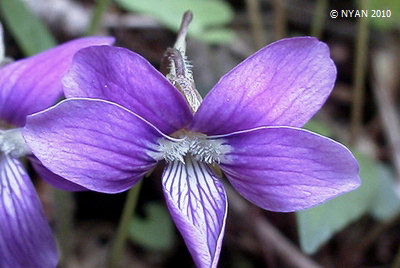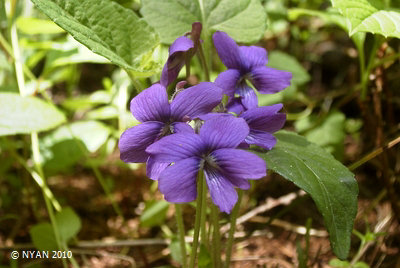| Section | Patellares (Boissier) Nakai | |
|---|---|---|
| Scientific Name | Type species | Viola hirtipes S. Moore : {Sakura Sumire} Published in: J. Linn. Soc., Bot. 17:379, t. 16, fig. 6. (1879) |
| Variety | ||
| Form |
Viola hirtipes f. lactiflola Hashimoto, nom. nud. : (white flower)
Viola hirtipes f. rhodovenia (Nakai) Hiyama ex F.Maek. : {Tishio Sumire}
Viola hirtipes f. glabra E.Hama : (hairless flower)
Viola hirtipes f. grisea (Nakai) Hiyama : {Watage Sumire}
(Classification not possible)
Viola hirtipes f. nudipes Hiyama : {Kentoku Sumire}
|
|
| Synonym |
Viola hirtipedoides W.Becker
Viola kamibayashii Nakai
Viola miyabei Makino Published in: Bot. Mag. (Tokyo) 16:124. (1902)
|
|
| Origin | ||
| Common names | 【Chinese】毛柄堇菜、【Korean】흰털제비꽃 | |
| Stalk Form | The individual leaves and flowering stalks emerge directly from the rootstock. | |
| Habitat | Sunny and deciduous forest. | |
| Distribution | Japan domestic | From Hokkaido to Kagoshima. |
| Japan overseas | Korea, China and Russia. | |
| Others | ||
| Flower | Shape | Large size (2 - 3cm long x 2 - 3cm wide). The upper valve is large. Concave or round head. |
| Color | Purple-red. There is the change of the light and shade. | |
| Spur | Long (about 7 mm). | |
| Season | Normal or slightly late. | |
| Stigma | nverted triangle. | |
| Aromatic | ||
| Others | White hairs grow densely on the flower side petals and flower stems. | |
| Leaf | Shape | 4 - 6cm long x 2 - 3cm wide. |
| Color | Both sides of the leaf are bright green. | |
| Others | After flowering, the petioles may be quite long (about 25 cm). Generally, the petioles have short white hairs. | |
| Seed | Shape | Obovate. Medium grain. |
| Color | Seeds: light brown, seed pillows: white. | |
| Others | ||
| Characteristics of roots | White. They do not divide deeply, but spread like crawling sideways. | |
| Endangered Information | Akita:EndangeredⅠ, Yamagata:EndangeredⅠ, Ibaraki:EndangeredⅡ, Saitama:EndangeredⅡ, Tokyo:EndangeredⅠ, Kanagawa:EndangeredⅠ, Shizuoka:EndangeredⅡ, Aichi:Near Endangered, Gifu:EndangeredⅠ, Nara:EndangeredⅡ, Hyougo:EndangeredⅡ, Tottori:EndangeredⅠ, Okayama:Near Endangered, Hiroshima:EndangeredⅠ, Yamaguchi:EndangeredⅠ, Fukuoka:EndangeredⅠ, Oita:Near Endangered, Kumamoto:Near Endangered, Kagoshima:EndangeredⅠ | |
| Type Specimen | China north part. | |
| Chromosome Number | 2n=24 (Nishikawa, T., 1985, Journal of Hokkaido University of Education : Section IIB) | |
| Reference Information | ||
| Others | It is changeful from what has many hair to hairless. | |





















